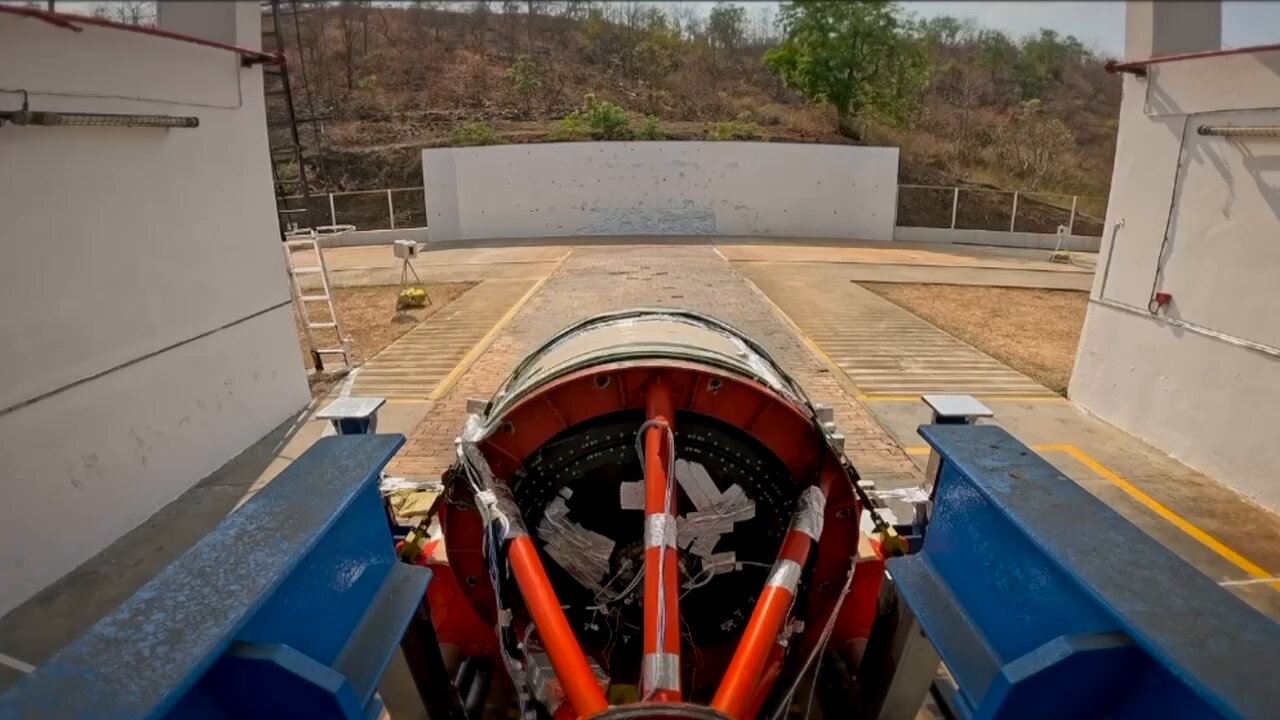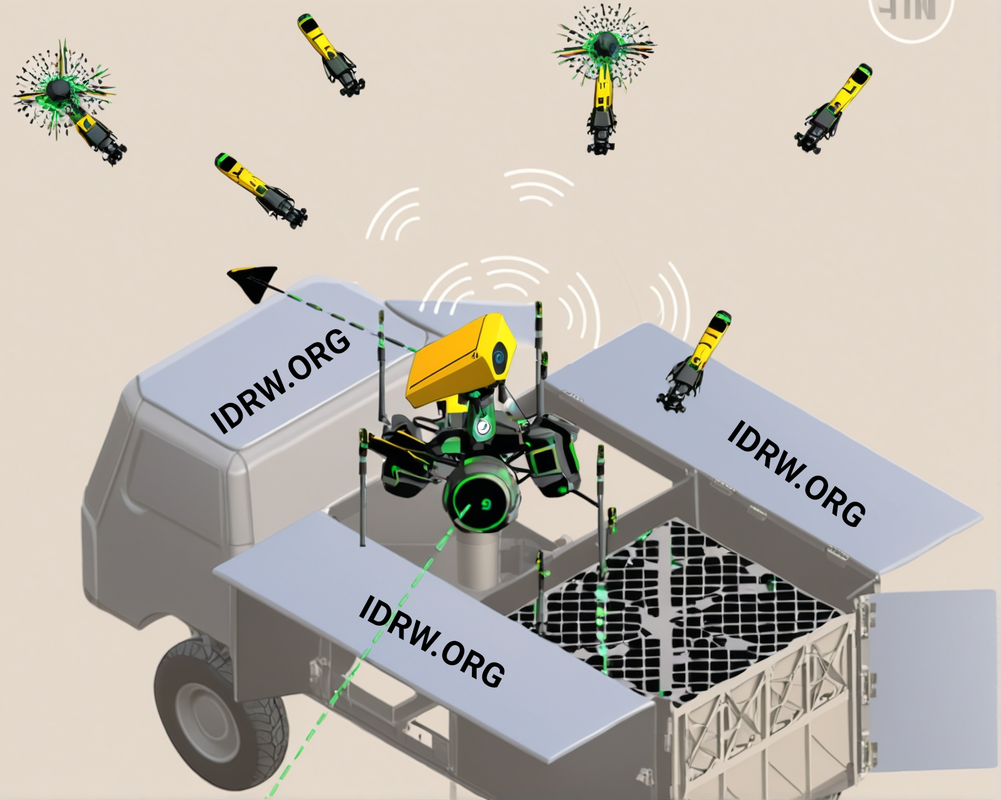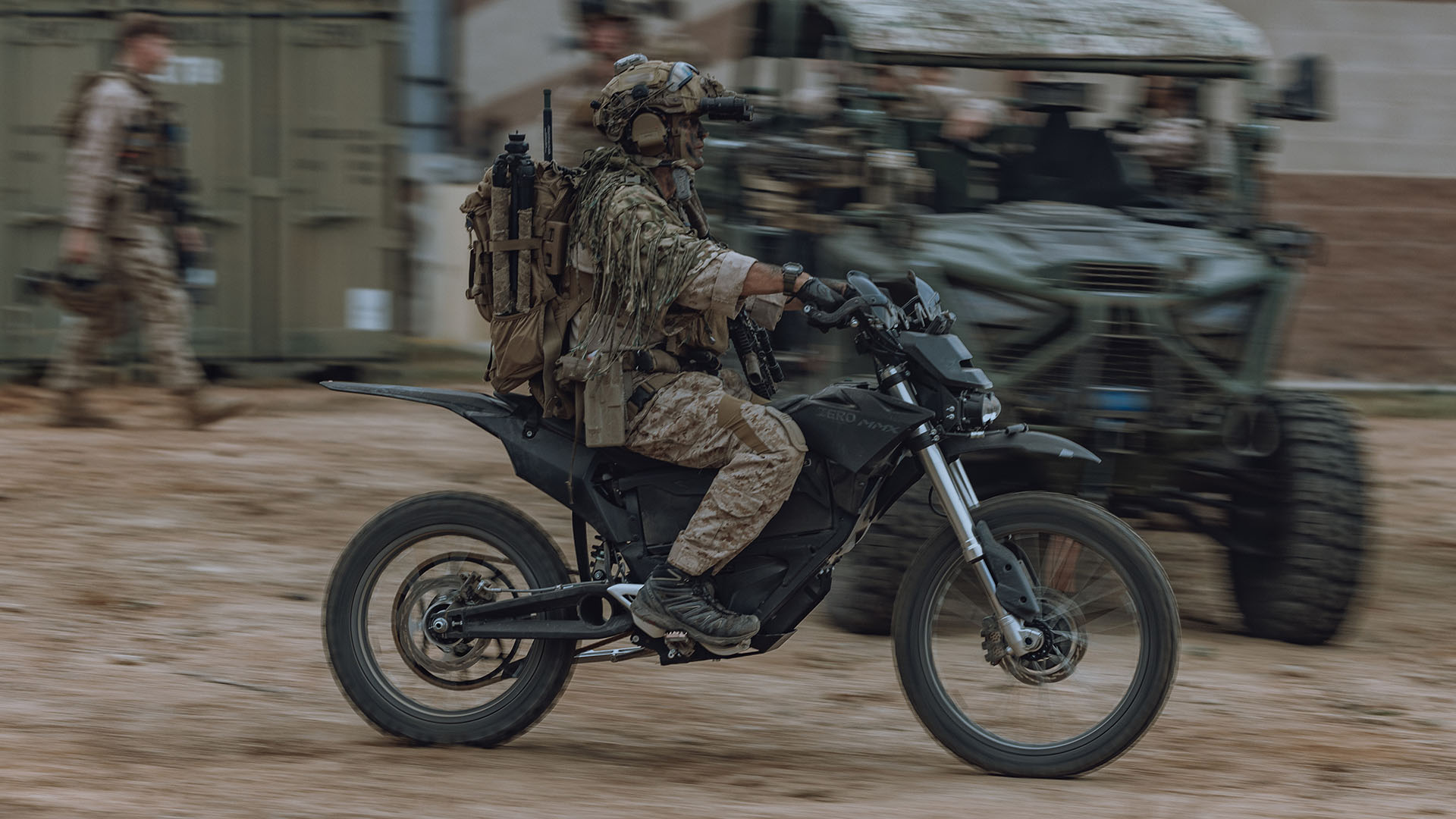AFI
SOURCE: AFI


In a groundbreaking stride toward modernizing its warfighting capabilities, the Indian Army’s Trishakti Corps has successfully validated Manned-Unmanned Teaming (MUM-T) at the tactical level during Exercise Sarvshakti. Conducted in early 2025 under the Eastern Command, this exercise marks a pivotal moment in integrating next-generation technology with frontline tactics, showcasing India’s readiness to adapt to the evolving nature of warfare. The Trishakti Corps, headquartered in Siliguri and tasked with guarding the strategically vital eastern sector along the Line of Actual Control (LAC), has demonstrated how human ingenuity and cutting-edge systems can converge to enhance combat effectiveness.
Manned-Unmanned Teaming (MUM-T) is a revolutionary concept that pairs human-operated platforms—such as fighter jets, helicopters, or ground units—with unmanned systems like drones or robots. This synergy leverages the strengths of both: the decision-making prowess and situational awareness of human operators, combined with the precision, endurance, and expendability of autonomous machines. At its core, MUM-T aims to amplify battlefield awareness, extend operational reach, and reduce risk to personnel—all while delivering a decisive edge over adversaries.
Continue readingSOURCE: AFI


In a significant milestone for India’s private aerospace sector, Solar Defence and Aerospace Limited (SDAL), based in Nagpur, has successfully developed and manufactured the propulsion system, including its igniter and the third-stage rocket motor, for the Vikram-1 Satellite Launch Vehicle. This achievement underscores SDAL’s growing role in advancing India’s space ambitions and highlights the increasing contribution of private industry to the nation’s aerospace ecosystem.
The Vikram-1, developed by Hyderabad-based Skyroot Aerospace, is poised to become India’s first privately built orbital rocket, with its maiden launch targeted for late 2025. SDAL’s contribution to this ambitious project—a robust third-stage rocket motor—marks a critical step toward realizing that goal. With a propellant mass of 2400 kg and a maximum thrust of 75,000 N (approximately 7.65 tons), this rocket motor is a testament to the precision and innovation driving India’s space technology advancements.
Continue readingSOURCE: AFI


In a moment of triumph for Indian innovation, Team Aerial Robotics has clinched 3rd place globally in the simulation stage of the International Conference on Unmanned Aircraft Systems (ICUAS) 2025 UAV Competition. This stellar achievement has earned them an exclusive invitation to the final stage of the prestigious event, scheduled for May 14-17, 2025, in Charlotte, North Carolina, USA. Notably, they stand alone as the only Indian team to advance to this phase, marking a historic milestone for the country’s burgeoning robotics and aerospace community.
A student-led initiative from the Indian Institute of Technology Kanpur (IIT Kanpur), Team Aerial Robotics has emerged as a trailblazer in the realm of autonomous aerial vehicles. Their journey to the ICUAS finals underscores their dedication to pushing the boundaries of unmanned aerial vehicle (UAV) technology through rigorous global competitions like the International Micro Air Vehicle Conference and Competition (IMAV) and the International Aerial Robotics Competition (IARC). Committed to open-source innovation and practical UAV applications, the team embodies the spirit of excellence, representing both their institution and India with unparalleled pride on the world stage.
Continue readingSOURCE: AFI


The Indian Air Force (IAF) has issued a clarion call for the development of an advanced autonomous interceptor system to counter the growing threat posed by long-range drones to vital installations across the country. In a recent statement, the IAF highlighted the urgent need for a cost-effective and efficient solution to detect, identify, and neutralize hostile drones, particularly in light of their increasing use in modern warfare. The proposed system, a tube-launched counter-swarm drone, is envisioned as a versatile platform capable of being deployed from helicopters, ground vehicles, or static installations, offering a robust defense against drone threats at a minimum operating altitude of 8,000 feet above mean sea level (AMSL).
The IAF’s concerns stem from the evolving nature of aerial threats, with long-range drones emerging as a significant risk to critical infrastructure such as air bases, radar stations, power plants, and other strategic assets. “Long-range drones are a threat to vital installations,” the IAF stated, noting that traditional methods of interception—such as using missiles—require large infrastructure and come with a high per-weapon cost. This approach is not only resource-intensive but also impractical for countering the sheer volume of drones that could be deployed in a swarm attack, a tactic increasingly employed by adversaries to overwhelm defenses.
Continue readingSOURCE: AFI


After months of speculation and fleeting glimpses, aviation enthusiasts and defense analysts alike are buzzing with excitement over newly emerged images offering the clearest look yet at the Shenyang Aircraft Corporation’s (SAC) latest creation: the J-50, tentatively dubbed “Shengad” by observers. Spotted in flight testing over Shenyang, Liaoning, China, in December 2024, this sixth-generation stealth fighter is shaping up to be a technological marvel, blending cutting-edge design with features that signal China’s bold ambitions in military aviation. With its tailless configuration, advanced electro-optical systems, and innovative aerodynamics, the J-50 is poised to redefine air combat capabilities for the People’s Liberation Army Air Force (PLAAF).
The J-50’s design breaks from convention, most notably with its lack of vertical tails—a hallmark of sixth-generation fighters prioritizing stealth and agility over traditional stability mechanisms. Instead, it relies on advanced flight control systems to maintain maneuverability. Paired with this tailless, lambda-wing planform are movable wingtips, a feature visible in recent imagery where the right wingtip appears deflected. These articulating surfaces likely serve as control mechanisms, enhancing the jet’s agility while preserving its low-observable profile. Adding to its futuristic silhouette are two-dimensional (2D) thrust-vectoring control (TVC) nozzles, a detail that suggests superior maneuverability at both subsonic and supersonic speeds, rivaling the likes of the American F-22 Raptor.
Continue readingSOURCE: AFI


In a forward-looking move to enhance operational stealth and efficiency, India’s elite Special Forces are set to integrate electric motorcycles and explore electric manned Unmanned Aerial Vehicles (UAVs) into their arsenal. This development, announced in early 2025, reflects the Indian military’s growing emphasis on cutting-edge, sustainable technology to meet the demands of modern warfare, particularly in covert and high-stakes missions.
The decision to equip Special Forces with electric motorcycles marks a significant shift toward quieter, more agile platforms for rapid insertion and extraction in sensitive operations. These motorcycles, likely sourced from indigenous manufacturers or international partners, promise near-silent operation—a critical advantage for reconnaissance, border patrols, and counter-insurgency missions where stealth is paramount. Drawing inspiration from global trends, such as the U.S. Special Operations Command’s use of Zero MMX electric bikes or the UAE’s trials with helicopter-mounted Zero FX models, India’s Special Forces aim to leverage similar capabilities.
Continue readingSOURCE: AFI


In a significant milestone for India’s defense manufacturing sector, Mahindra Defence Systems Limited (MDSL) has successfully delivered 50 Vehicle Mounted Infantry Mortar Systems (VMIMS) to the Indian Army. This cutting-edge system, a collaborative effort between Mahindra and UK-based Milanion NTGS, integrates the advanced Alakran mortar system with Mahindra’s rugged Armoured Light Specialist Vehicle (ALSV), known in Indian service as the “Armado.” The delivery of this initial batch, completed by late 2024 as scheduled, underscores India’s growing prowess in indigenous defense production under the “Make in India” initiative.
The Mahindra VMIMS is a specialized mortar platform mounted on a 4×4 Armado vehicle, designed to enhance the Indian Army’s mobility, firepower, and precision on the battlefield. Available in configurations featuring either an 81mm or 120mm mortar, the system employs an electromechanical or hydraulic deployment mechanism for rapid setup and firing. This design enables the VMIMS to excel in “shoot and scoot” operations—a tactical approach where the system can unleash a barrage of eight rounds in under two minutes before swiftly relocating to evade counterattacks. With a maximum firing range of 6.5 to 8.2 kilometers, depending on the mortar caliber, the VMIMS provides a versatile and lethal capability for engaging targets at a distance.
Continue readingSOURCE: AFI


India’s quest for self-reliance in defence manufacturing is on the cusp of a major milestone, according to Dr. Sameer V. Kamat, Chairman of the Defence Research and Development Organisation (DRDO). Speaking at a recent industry conclave in New Delhi, Dr. Kamat expressed optimism about the nation’s trajectory, stating, “I estimate that in the next 4–5 years, we will achieve around 90% self-reliance in defence production.” This ambitious projection underscores India’s rapid strides in reducing dependence on foreign arms, a shift driven by a mix of policy reforms, private-sector participation, and DRDO-led innovation.
Dr. Kamat’s remarks come at a time when India, one of the world’s largest arms importers, is aggressively pursuing its “Make in India” initiative to bolster indigenous defence capabilities. Over the past decade, the country has transitioned from relying heavily on imports—particularly from Russia, France, and the United States—to developing homegrown systems like the Tejas fighter jet, Arjun tank, and Pinaka rocket launchers. The DRDO chief’s 90% target reflects confidence in ongoing projects, including advanced missile systems, stealth warships, and next-generation drones, many of which are nearing operational deployment.
Continue readingSOURCE: AFI


The Indian Air Force (IAF) has faced a troubling year in 2025, with a series of jet crashes casting a harsh spotlight on its ageing fleet and maintenance practices. The latest incident, a Jaguar twin-seater crash near Jamnagar, Gujarat, on April 2, claimed the life of Flight Lieutenant Siddharth Yadav, marking the second Jaguar loss this year after a similar accident in Haryana in March.
These back-to-back crashes, alongside others involving MiG-21s and Mirage 2000s reported earlier in 2025, have raised alarm bells about the IAF’s ability to sustain its operational readiness. While many air forces worldwide continue to operate older aircraft, their crash rates remain notably lower, prompting questions about the IAF’s maintenance department and its oversight mechanisms. Past Comptroller and Auditor General (CAG) reports on Indian crashes offer critical insights into systemic issues that may still persist, urging a thorough relook at how the IAF maintains its fleet.
Continue readingSOURCE: AFI

Chandrapur, a town near Guwahati in Assam, is set to become a pivotal hub for India’s space ambitions as the Indian Space Research Organisation (ISRO) establishes the country’s first space debris monitoring radar under Project Netra (Network for Space Object Tracking and Analysis). This groundbreaking initiative, announced on April 3, 2025, marks a significant step toward enhancing India’s space situational awareness (SSA) and safeguarding its growing fleet of satellites from the increasing threat of space debris.
Project Netra involves the creation of a comprehensive network of observational facilities, including optical telescopes, radars, and a centralized command center. The radar system in Chandrapur, to be set up on a 200-bigha plot of land at the site of a defunct thermal power plant, will be capable of detecting objects as small as 10 cm in radius at distances up to 2,000 km. This capability will allow ISRO to track space debris in low-earth orbits (LEO), where most of India’s remote-sensing satellites operate, as well as monitor potential threats to assets in higher orbits. ISRO aims to make at least one radar operational within this year, with the full Chandrapur system expected to be commissioned within four years, by 2029.
Continue readingSOURCE: AFI


As India charts its course toward developing a sixth-generation fighter jet under the Advanced Medium Combat Aircraft (AMCA) program, the strategic imperatives of its northern frontier—particularly the People’s Liberation Army Air Force (PLAAF) airbases in the Tibetan Plateau—demand a bold rethink of the platform’s design. To effectively counter China’s growing military presence and execute deep-strike missions against heavily defended targets, India’s next-gen fighter must evolve into a fighter-bomber with a Maximum Take-Off Weight (MTOW) of around 50 tons. This requirement stems from the need for enhanced payload, range, and survivability, critical for penetrating the PLAAF’s air defense network and neutralizing high-value assets deep inside contested territory.
The Tibetan Plateau, often called the “Roof of the World,” hosts several key PLAAF airbases, such as Hotan, Ngari Gunsa, and Lhasa Gonggar, located between 1,500 and 3,000 kilometers from India’s northern borders. These bases, situated at altitudes exceeding 4,000 meters, serve as launchpads for fighter jets like the J-20 and J-16, as well as bombers like the H-6K, capable of striking Indian targets with standoff weapons. The PLAAF’s deployment in Tibet has grown steadily, bolstered by advanced radar systems, surface-to-air missiles (SAMs) like the HQ-9, and an integrated air defense network extending into Xinjiang and beyond. Neutralizing these airbases is vital to disrupt China’s ability to project air power over the Line of Actual Control (LAC) during a conflict.
Continue readingSOURCE: AFI


on X),
India has announced a missile test in the Bay of Bengal, with a designated no-fly zone in effect from April 12 to April 14, 2025, as part of its ongoing efforts to bolster its strategic defense capabilities. The advisory, issued by the Indian Navy’s Eastern Naval Command in Visakhapatnam, covers a 1,245 km-long corridor stretching from Abdul Kalam Island off the Odisha coast to the Andaman and Nicobar Islands, under the purview of the Indian Tri-Service Theatre Command. The test underscores India’s commitment to advancing its missile technology amid growing regional security concerns.
According to the notice, the no-fly zone will be active daily from 0400 UTC to 0430 UTC (9:30 AM to 10:00 AM IST) on April 12, 13, and 14, 2025. The restricted area spans a significant portion of the Bay of Bengal, ensuring safety for maritime and air traffic during the test window. Abdul Kalam Island, formerly known as Wheeler Island, is a key launch site for India’s missile tests, hosting facilities for the Defence Research and Development Organisation (DRDO). The island has been the launchpad for major systems like the Agni series of ballistic missiles and the BrahMos supersonic cruise missile.
Continue readingSOURCE: AFI


In a significant stride towards bolstering India’s self-reliance in defense manufacturing, Gurugram-based Kohli Enterprises has been awarded the Limited Authorization Transfer of Technology (LA ToT) for the production of brake parachutes for the Indian Air Force’s Su-30 MKI aircraft. The technology transfer, facilitated by the Defence Research and Development Organisation (DRDO) under the Ministry of Defence, Government of India, marks a pivotal moment in integrating private industry into the nation’s defense production ecosystem.
The formal handover took place during an event organized by DRDO on the sidelines of Aero India 2025, held in Bengaluru from February 10-14, 2025. Kanav Kohli, Managing Director of Kohli Enterprises, received the LA ToT document from Raksha Rajya Mantri Shri Sanjay Seth, Minister of State for Defence, in the presence of senior officials from the Ministry of Defence, DRDO, and the Indian Air Force (IAF). This transfer underscores India’s ongoing “Aatmanirbhar Bharat” initiative, aimed at reducing dependence on foreign suppliers and fostering indigenous innovation.
Continue readingSOURCE: AFI


In a significant step forward for India’s aerospace and propulsion industry, DG Propulsion has announced the successful completion of its first test turbine wheels, marking a pivotal moment in the company’s journey to refine its manufacturing processes. The initial batch, described as “phenomenal” by the company, has passed visual inspections with flying colors, setting a promising tone for the next stages of production.
DG Propulsion, a rising player in the global propulsion technology sector, conducted this trial run to fine-tune its methods and ensure the highest standards of quality and precision. “This was a trial run to refine our process and methods, and so far, the results speak for themselves,” the company stated in an official release. The turbine wheels, a critical component in jet engines and other high-performance propulsion systems, are a testament to DG Propulsion’s commitment to innovation and excellence.
Continue readingSOURCE: AFI


In a significant step towards strengthening India’s defense and surveillance capabilities, Paras Defence and Space Technologies announced on Thursday, April 3, 2025, that it has signed a Memorandum of Understanding (MoU) with MicroCon Vision Ltd, an Israel-based subsidiary of the Rafael Group. The agreement focuses on the supply of advanced cameras for drones, positioning Paras Defence as a key player in India’s growing unmanned aerial systems market.
The collaboration aims to enhance the indigenous content in drone cameras and Intelligence, Surveillance, and Reconnaissance (ISR) payloads, aligning with India’s push for self-reliance in defense manufacturing. By integrating locally developed components, Paras Defence expects to significantly reduce costs, making advanced drone technology more accessible for both military and commercial applications. This move underscores the company’s commitment to the ‘Make in India’ initiative while leveraging global expertise to meet domestic needs.
Continue reading